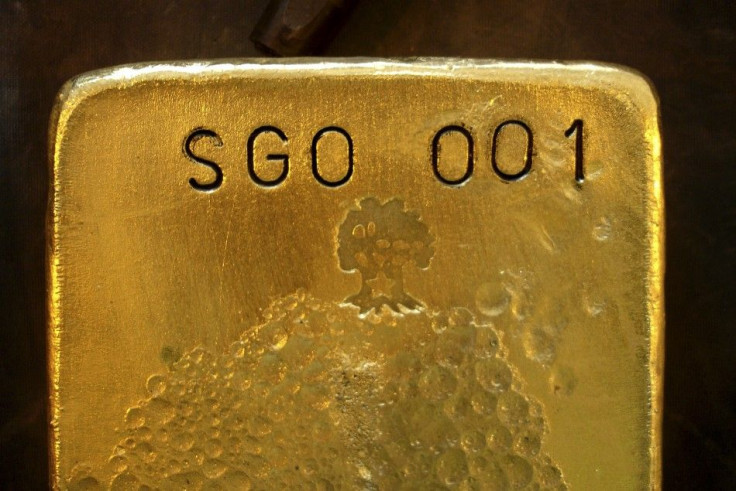Gold Price Falls in European Trading

Gold fell on Thursday, after the Federal Reserve's widely-anticipated move to boost U.S. growth lifted the dollar but pummelled global equities and hit the entire commodities complex.
Palladium fell to its lowest price in 10 months and U.S. palladium futures lost nearly 6 percent in their biggest one-day slide in six months after a key measure of Chinese manufacturing showed factory activity in the world's top commodity consumer contracted for a third month in a row.
Warning of significant downside economic risks, the U.S. central bank said it would launch a $400 billion programme to shift its $2.85 trillion balance sheet more heavily towards longer-term debt.
The decision, while widely-expected, disappointed investors who had hoped for stronger stimulus measures, which prompted a slide in stocks and commodity prices.
The dollar index rose to seven-month highs after the Fed's decision heightened the appeal of shorter-dated U.S. debt and gave the greenback's yield-appeal an edge over that of other currencies, which in turn delivered a blow to gold.
The concern about the euro zone debt crisis will lend support to the safe haven aspect of gold in the longer-run, but momentum is lacking for bullion to march towards its record high above $1,900 an ounce, analysts said.
Spot gold was last down 0.9 percent at $1,765.00 an ounce by 1003 GMT, close to its lowest since late August.
Looking at gold, you have periods when you have strength in the dollar and rising gold, when both are seen as safe-havens, but right now, you'd have thought that gold would be well supported given the European situation, the U.S. situation and a slowing China, said Societe Generale analyst David Wilson.
It's really the dollar rally that is not particularly helpful, he said.
Gold has fallen by 3.2 percent so far in September, plagued by rising volatility and the strength of the dollar, although so far this quarter, it has hit record highs above $1,900 an ounce and is up 18 percent in its largest quarterly rally in 25 years.
For the short term, gold is likely to remain in the range of $1,750 and $1,850, said Ong Yi Ling, an analyst at Phillip Futures.
If we do see $1,700, that could potentially cause a greater correction to $1,500.
INVESTORS WARY BUT STILL BUYING
Global holdings of gold in exchange-traded products fell since the end of August, as investors grew wary of its wide price swings and the uncertain economic outlook cut their appetite for any kind of risk.
After hefty inflows of metal late last week, however, the global gold ETFs tracked by Reuters show a rise of nearly 300,000 ounces of metal this month, indicating that investor appetite for gold is intact.
Investors are shifting their attention to the Group of 20 talks, due to take place in Washington on Thursday and Friday, where Europe will be under heavy pressure to stem its deepening debt crisis.
In other metals, palladium, used mainly in catalytic converters to reduce a vehicle's emissions, fell to its lowest since last November after the HSBC China Flash Purchasing Managers' Index showed a third monthly consecutive contraction in factory activity.
The index dipped to 49.4 from August's final figure of 49.9. A reading below 50 indicates contraction.
Economists and Chinese officials have widely predicted China's growth will slow, largely because of waning exports. The country, known as the factory to the world, is especially vulnerable to fading demand from the United States and Europe, its two biggest export markets.
Palladium relies heavily on the Chinese car market for demand, where it is used in autocatalysts in gasoline-powered vehicles.
Imports of the metal rose by 9 percent year-on-year last month to their highest in five months, but evidence of a slowing China has cut investor appetite for palladium, as reflected by the 15 percent fall so far this year in holdings of the metal in ETFs.
Spot palladium was last down 2.8 percent at $667.22 an ounce, while most-active U.S. December palladium futures were down 5.86 percent at $671.95 an ounce.
Platinum was down 1.3 percent at $1,733.74 an ounce, while silver was down 2.2 percent at $38.71 an ounce.
© Copyright Thomson Reuters 2024. All rights reserved.






















